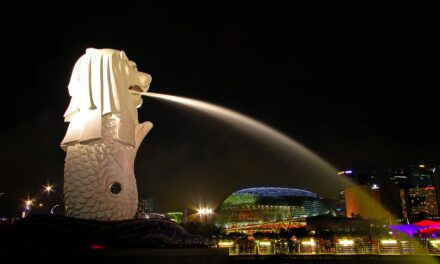Singapore inflation cooled in July, official figures showed on Friday, thanks to lower inflation across the board.
“July inflation came in below market expectations, primarily due to a notable slowdown in core inflation,” Ahmad Mobeen, a senior economist at S&P Global Market Intelligence, told Diplomatic Network (Asia).
The Monetary Authority of Singapore’s core inflation figure, which excludes accommodation and private transport, for July came in at 2.5% compared to a year ago. This was lower than June’s core CPI reading of 2.9%.
July’s print was the lowest it has been in over two years, when the print came in at 2.2% in February 2022.
The core CPI fell 0.1% on a monthly basis.
Central banks closely monitor core CPI to inform monetary policy decisions. A stable core CPI helps central banks decide whether to raise or lower interest rates to control inflation or stimulate economic growth.
Meanwhile, the headline figure, which includes accommodation and private transport, was up 2.4% compared to the same month last year.
“This was because a slowdown in accommodation and core inflation was offset by a pickup in private transport costs,” MAS said.
On a monthly basis, headline inflation cooled by 0.3%.
Deep dive
Private Transport inflation was up 0.9% year-on-year due to smaller declines in the prices of cars and motorcycles alongside a steeper increase in petrol prices. This was compared to a deflation of 0.7% in June.
Services inflation moderated to 2.9% year-on-year in July, compared to June’s 3.4% inflation. This was mainly due to a slower pace of increase in holiday expenses.
Accommodation inflation cooled to 3.1% year-on-year in July, lower than June’s 3.3% inflation print. Housing rents rose at a more modest pace.
Food inflation edged down to 2.7% in July, compared to 2.8% year-on-year inflation in June. Both the prices of non-cooked food and food services saw prices increase at a slower pace.
Electricity & Gas inflation remained relatively high in July at 6.6%. This was lower than June’s 6.9% print, thanks to a smaller increase in electricity prices.
Retail & Other Goods inflation eased to 0.3% year-on-year in July as the prices of clothing, non-durable household goods and personal effects fell. June’s inflation print came in at 0.5%.
Domestic factors
Little was changed as MAS reiterated what was said last month.
“On the domestic front, increases in unit labor costs have slowed in tandem with the cooling labor market. Nonetheless, businesses are likely to continue passing through the earlier increases in labor costs to consumer prices, albeit at a reduced pace.”
This means that, as the job market slows down and becomes less competitive, the rapid increase in the cost of labor per unit of output has also decelerated. However, businesses are still likely to pass on the higher costs they incurred earlier—both from labor and other expenses—to consumers.
Looking ahead
After July’s print surprising to the upside, inflation may be cooling at a faster pace than expected by analysts.
“S&P Global Market Intelligence now expects overall CPI inflation to decline slightly faster than previously anticipated, with the 2024 average projected at 2.51%,” Mobeen said.
“This drop will mainly be driven by a continued slowdown in private transport inflation and easing accommodation inflation as housing completions rise. Core inflation is also forecasted to ease in the second half of 2024 into 2025, due to decreasing import pressures and a less tight labor market.”
Domestically, the labor market continues to pose a challenge to reducing inflation. On the international front, geopolitical shocks and disruptions in global transportation could also emerge as significant risks.
“Stronger-than-expected labor market conditions could lead to a re-acceleration of wage growth. Fresh geopolitical shocks, adverse weather events and renewed transportation disruptions around the world could put upward pressure on global energy and food commodity prices, as well as shipping costs,” MAS said.
Meanwhile, an unforeseen slowdown in the global economy could help cool inflation.
“Conversely, an unexpected weakening in the global economy could induce a greater easing of cost and price pressures.”
An unforeseen global economic slowdown could help cool inflation by reducing demand for goods and services, leading to lower prices for energy and commodities, easing supply chain pressures, and slowing wage growth, all of which decrease overall cost and price pressures in the economy.
*Update 24/08/2024: inclusion of quotes from Ahmad Mobeen.
*Correction 25/08/2024: added “more than” to headline to better reflect timeframe.







